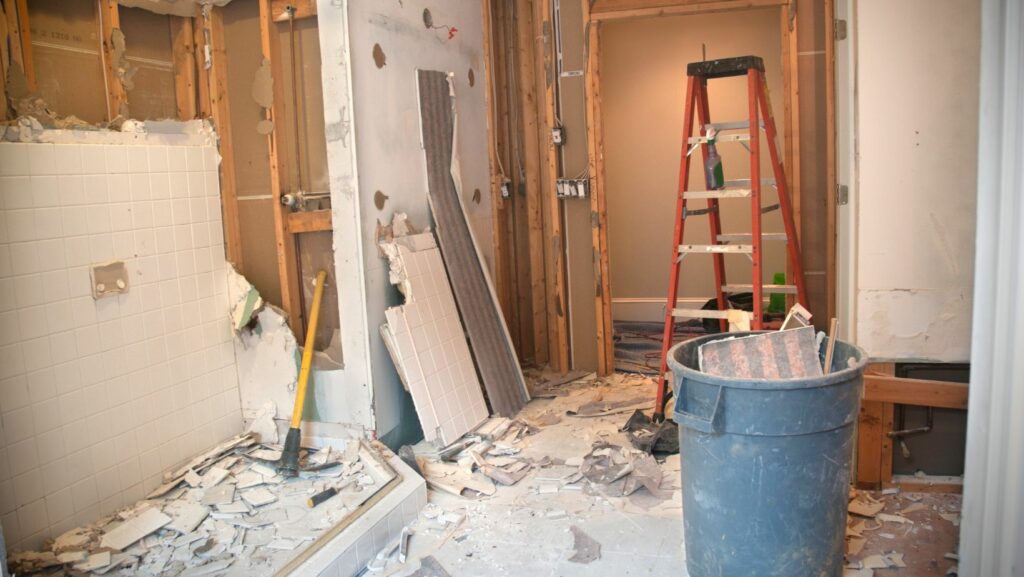Demolition projects, integral to urban development and infrastructure renewal, often involve handling hazardous materials that require specialized care and attention. Ensuring safety during these operations is paramount to protecting workers and the environment. We will explore one of the Leading demolition companies in Oregon‘s meticulous strategies for managing hazardous materials and mitigating potential risks responsibly.
Understanding Hazardous Materials in Demolition
Demolition sites can harbor hazardous materials, including asbestos, lead-based paints, PCBs (polychlorinated biphenyls), and mercury-containing devices. If improperly handled or disposed of, these substances pose severe health and environmental risks. Identifying and categorizing these materials is the initial step in formulating a comprehensive management plan.
Risk Assessment and Planning
Before commencing any demolition activities, thorough risk assessments are conducted to identify potential hazards and determine the safest methods for removal and disposal. This proactive approach allows demolition companies to develop tailored strategies that comply with regulatory requirements while minimizing risks to workers and the surrounding community.
Containment and Removal Protocols
Once hazardous materials are identified, containment measures are implemented to prevent their spread during demolition. Specialized equipment isolates contaminated areas, such as negative air pressure systems and protective barriers. Removal protocols adhere to established guidelines, ensuring that hazardous materials are safely extracted and transported for proper disposal or recycling.
Safe Handling Practices
During demolition, trained personnel employ safe handling practices to minimize exposure to hazardous materials. Protective equipment (PPE) such as respirators, gloves, and coveralls are mandatory to safeguard workers from inhalation or direct contact. Regular monitoring and air quality testing ensure contamination levels remain within permissible limits throughout the project.
Environmental Protection Measures
Demolition companies prioritize environmental protection by implementing measures to mitigate the impact of hazardous materials on ecosystems and natural resources. This includes employing eco-friendly demolition techniques, such as selective dismantling and deconstruction, to minimize waste generation and maximize material salvage for reuse or recycling.
Waste Management and Disposal
Stringent regulations govern the proper disposal of hazardous waste to prevent environmental contamination. Demolition companies partner with licensed waste disposal facilities that handle hazardous materials according to regulatory standards.

Documentation and tracking systems monitor the waste management process, ensuring transparency and accountability.
Community Engagement and Communication
Effective communication with local communities is integral to successful demolition projects involving hazardous materials. Demolition companies engage stakeholders through public consultations and outreach programs to address concerns, disseminate information on safety protocols, and foster trust. Open dialogue promotes transparency and ensures that community interests are considered throughout the project lifecycle.
Training and Certification
Central to the safe management of hazardous materials in demolition is the training and certification of personnel. Demolition companies invest in ongoing education and certification programs for their workforce to ensure competency in handling dangerous materials. Training covers identification techniques, safe removal procedures, emergency response protocols, and regulatory compliance. Certification verifies that employees possess the necessary knowledge and skills to execute demolition projects safely and efficiently, reducing the risk of incidents or exposure.
Emergency Preparedness
Despite meticulous planning, unforeseen circumstances can arise during demolition activities involving hazardous materials. Demolition companies prioritize emergency preparedness by developing comprehensive response plans tailored to potential scenarios such as spills, leaks, or unforeseen exposures. These plans outline immediate actions to contain incidents, protect personnel and the public, and minimize environmental impact. Regular drills and simulations reinforce preparedness and ensure that response teams can mobilize swiftly and effectively in critical situations.
Continuous Improvement and Innovation
In an evolving regulatory landscape and with advancing technology, demolition companies embrace continuous improvement and innovation in managing hazardous materials. They collaborate with researchers, environmental scientists, and regulatory bodies to adopt cutting-edge techniques and technologies that enhance safety, efficiency, and sustainability.

Innovations such as robotic demolition systems, remote monitoring technologies, and advanced material separation methods contribute to safer work environments, reduced operational risks, and enhanced environmental outcomes.
Collaboration with Regulatory Authorities
Demolition companies collaborate closely with regulatory authorities throughout the project lifecycle to ensure local, state, and federal compliance. This partnership facilitates the timely acquisition of permits, approvals, and inspections necessary for handling hazardous materials. Regular communication and adherence to regulatory guidelines prevent legal liabilities and demonstrate a commitment to upholding safety standards and environmental protection. By fostering a collaborative relationship, demolition companies contribute to a regulatory environment that promotes responsible demolition practices and protects public health and safety.
Monitoring and Post-Demolition Assessment
Monitoring continues beyond the demolition phase to assess environmental impacts and ensure residual hazardous materials are properly managed. Post-demolition assessments involve comprehensive site inspections to detect any remaining contaminants or potential risks. Soil and water samples are collected and analyzed to verify compliance with environmental quality standards. This thorough evaluation informs remediation efforts if necessary, ensuring the site is restored to a safe condition suitable for future redevelopment or land use. By conducting rigorous monitoring and assessments, demolition companies uphold accountability and environmental stewardship long after project completion.
Safely managing hazardous materials in demolition projects demands meticulous planning, rigorous adherence to safety protocols, and environmental stewardship. By prioritizing risk assessment, containment, safe handling practices, and community engagement, demolition companies uphold their commitment to safeguarding health, minimizing environmental impact, and achieving regulatory compliance. As urban landscapes evolve through demolition and redevelopment, these practices ensure that progress is achieved responsibly and sustainably.


More Stories
Is Vinyl Flooring a Safe Option for Homes with Pets or Kids? Expert Insights
Touch ‘N Go Casino Payments
The Psychology of Esports Fans: What drives loyalty and engagement?